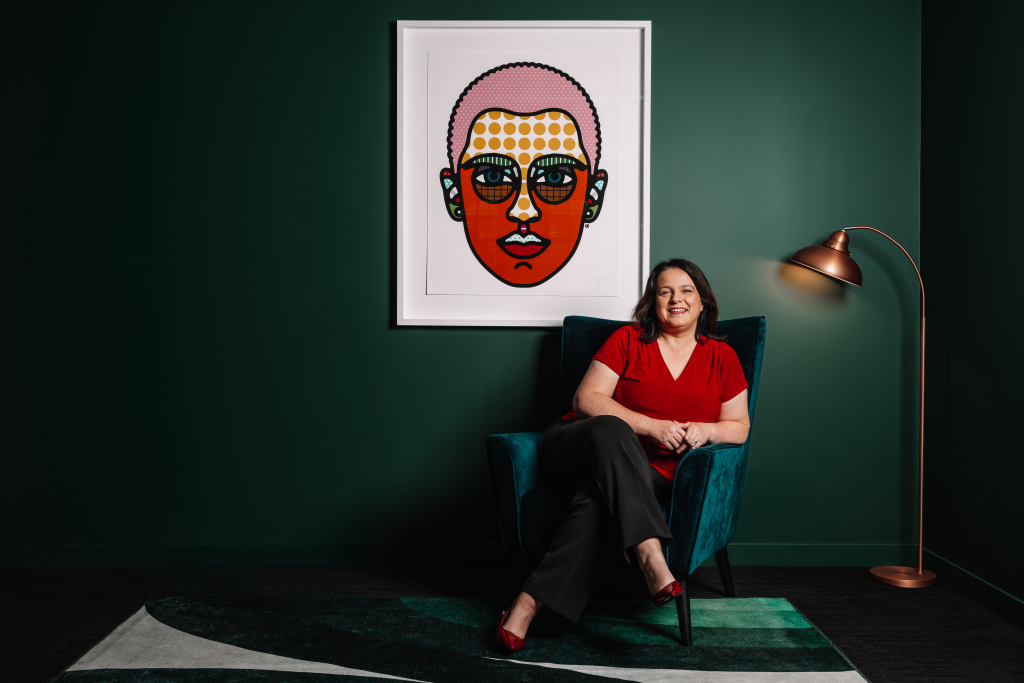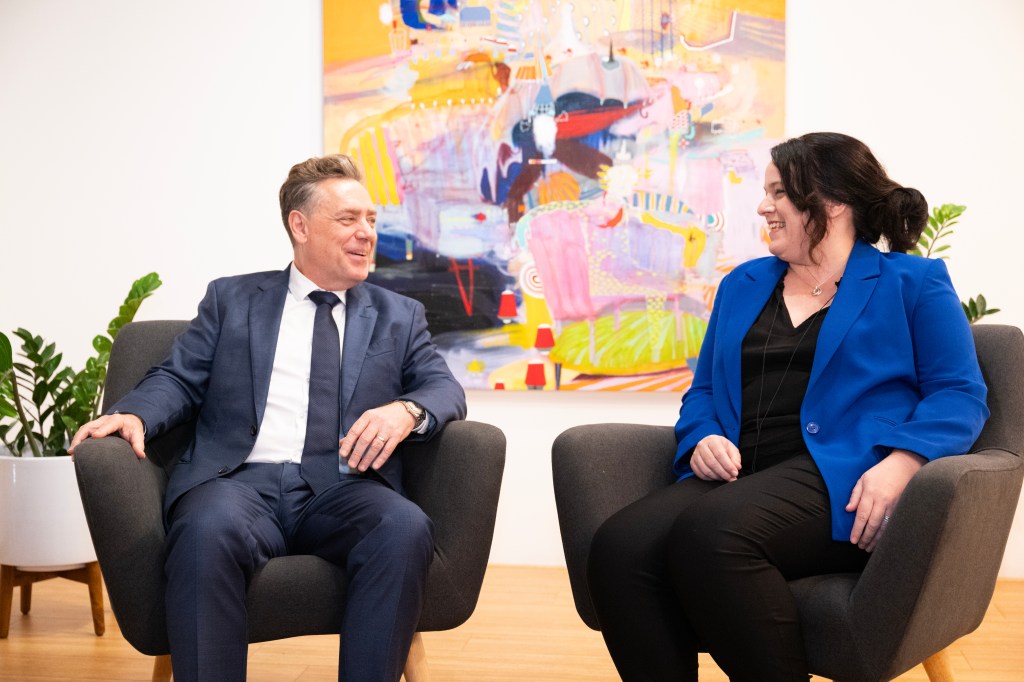Designed by humans, for humans: Inside the strategic heart of Liquid
At the heart of the most complex challenges in health, education, and government lies a simple truth: humans need systems that are built for them, not around them. This is the foundational philosophy of Liquid, a strategic design and digital transformation consultancy led by Fiona Armstrong, a CEO who believes that impact begins with understanding people.
BRANDVOICE – SPECIAL FEATURE

For more than 25 years, Brisbane-based design consultancy Liquid has been quietly shaping some of the most impactful human-centred digital experiences in Australia. With a team of more than 50 designers, strategists, researchers and technologists, the company has built a reputation for deeply considered, systemic work that solves complex problems in public health, education and government.
At the centre of its values-led approach is CEO Fiona Armstrong, whose career journey, from PR director to senior public servant to CEO, mirrors Liquid’s transformation: growing from a 1990s Brisbane animation studio working with clients like Disney and Warner Bros, to an independent strategic design consultancy at the intersection of service, society and technology.
Liquid’s ethos – “designed by humans, for humans” – is not just a slogan. It’s a provocation. It asks: What would happen if we treated digital services not as products to sell, but as systems that exist in people’s real, messy, emotionally complex lives? What if we didn’t just digitise what already exists, but reimagined what should exist and built it?
This philosophy came into sharp focus during the pandemic, when Liquid redeveloped Head to Health, a national mental health navigation platform in the middle of COVID-19. The goal was deceptively simple: help Australians, often isolated and overwhelmed, find the right mental health support fast.
“The mental health system is incredibly complex to navigate, especially if you’re in distress,” Armstrong explains. “We had to build a new way in.”
What emerged was an intelligent triage experience that began with a self-guided “quiz” — a front-end tool that belied the sophisticated clinical and algorithmic work happening behind the scenes.
The system assessed symptom severity, personal preferences and socio-demographic context to route users toward the most appropriate care pathway. That could be a clinician, a peer support group or a self-guided cognitive behavioural therapy tool.
The logic: not everyone wants, or needs, to speak to someone immediately, but they all need help finding the right support.
“I was curious about systems; power, equity, and how change happens at scale. Technology is a part of that system now. “
Fiona Armstrong
The system also included feedback loops to learn from outcomes and continuously improve referral accuracy — critical infrastructure that, before Liquid’s involvement, didn’t exist.
Building something like Head to Health (now Medicare Mental Health) demanded systems thinking, clinical safety, technical rigour and cultural sensitivity. “And all of that,” Armstrong notes, “starts with trust.”
This notion of trust, between users and institutions, between citizens and emerging technologies, is a recurring theme in both Liquid’s work and Armstrong’s thinking.
She describes her lens as “strategic design”, but it draws just as much from sociology as it does from modelling services.
“I studied sociology because I was curious about systems; power, equity, and how change happens at scale. Technology is a part of that system now. So, the question becomes: how do we design with it, not just for it?”
Armstrong first encountered Liquid as a client, finding the company’s creativity irresistible. As the company’s founder, Michael Burke, transitioned to Executive Chair, Armstrong stepped in to build on a powerful legacy.
Perhaps most emblematic is its InsideU project with Pixar and the University of Colorado, Boulder, which combines animation, behavioural psychology and co-design to create a playful, research-backed platform that helps children express difficult emotions. It won the 2024 Australian Good Design Award for Digital Design.
“The project reminded us that humans, regardless of age, learn best through connection. Through story and experience,” Armstrong says.
Today, Liquid is applying that sensibility to AI and data. The firm recently worked with The Mandarin to lead Australia’s first national survey of government attitudes toward AI, aiming to clarify where public servants see promise.
“What we kept hearing was a lot of hype and fear, but not enough clarity,” Armstrong says. “We wanted to understand where people were finding value. What were the real use cases? What was working on the ground?”
The results will be released in August, but in current conversations, Liquid is seeing the highest potential for AI in two key areas: unlocking value from unstructured data and streamlining compliance-heavy processes like auditing or application workflows. However, rather than rushing in with a pre-built solution, Liquid’s approach has been one of deliberate experimentation, starting small, focusing on safety, and building transparency. Take, for example, their early work integrating large language models to support mental health search tools.

“People often don’t have the clinical vocabulary to describe what they’re going through,” Armstrong explains. “So we used semantic search to let them express what they feel in plain language — and then match that to evidence-based resources.”
It’s a simple, powerful idea: start where people are. Let the technology do the translation. And never let the machine replace the relationship.
Research from KPMG and the University of Melbourne suggests Australians are among the world’s most sceptical AI adopters, put off by design opacity and lingering distrust from scandals like Robodebt.
“We haven’t had enough inclusive, public conversations about what we want AI to do for us,” she says. “And people understandably feel uneasy when they are not engaged in the conversation.”
So, what would a better approach look like? For Armstrong, “It’s not about teaching abstract skills, it’s about showing people why a tool matters in their life.”
It also means expanding who gets to participate in shaping these systems, from technologists and designers to end users, frontline workers and communities.
“This shouldn’t just be about government or big tech,” she says. “It should be a collaborative process with transparency, accountability and human values at its core.” This commitment to meaningful co-design runs through Liquid’s DNA.
“We’re not here to be the biggest,” Armstrong says. “We’re here to be the most useful. To work on problems that matter.
To make the systems that support our lives more human.”
Their approach is refreshingly grounded. If transformation is inevitable, Liquid also makes it intentional, planet-aware, equity-conscious and structurally ambitious. Most of all, it is always designed by humans, for humans.
Be part of the change: liquidinteractive.com.au